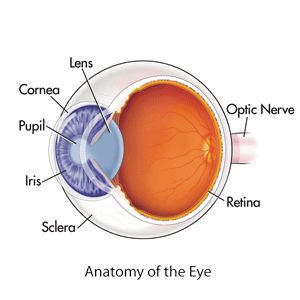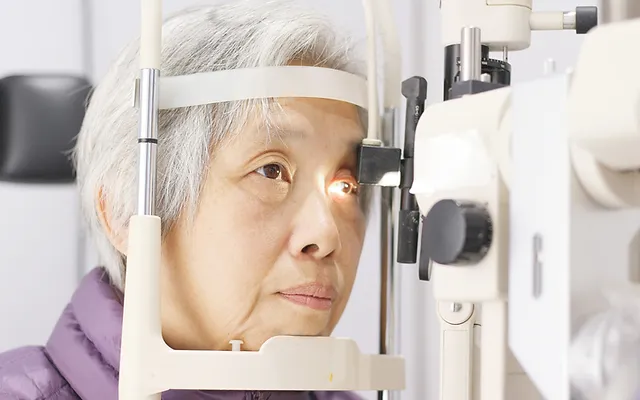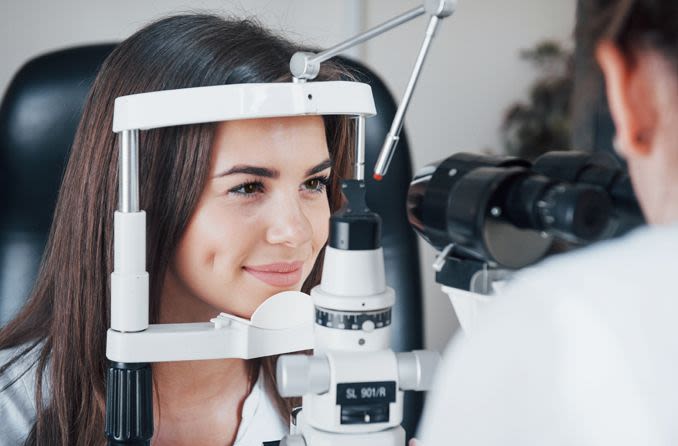Types of Corneal Diseases
The cornea is the clear “window” on the front of the eye. It focuses light to pass through the eye, forming an image on the retina. This also creates a barrier preventing infection, dust, and other harmful matter from the outside world. Like the crystal on a watch, it gives us a clear window to look through.
How can I Protect Myself Against Cornea Diseases?
The health of the cornea plays a significant role in your vision. Many common corneal conditions have obvious symptoms. Regular screenings with your eye doctor are the best way to protect your eyes.

When Should I see an Eye Doctor for Cornea Disease?
The adult cornea is only about 1/2 millimeter thick and consists of 5 layers. The tissue of the cornea can usually repair itself. Because there are no blood vessels in the cornea, it is usually clear and has a shiny surface. There are more nerve endings in the cornea than anywhere else in the body making it very sensitive. Deep injury or more substantial trauma can result in a variety of symptoms such as-
- Blurred Vision
- Redness
- Tearing
- Sensitivity to light
- Pain or discomfort
In some cases, injury or infection can lead to corneal scarring.
What are Common Corneal Conditions?
Many diseases can involve the cornea. They can range from infectious to inflammatory to immune-related. Our doctors and staff check your vision care during an examination. Some of the corneal conditions that our doctors treat include:
Pterygium & Pinguecula
Pterygium and Pinguecula are two common types of non-cancerous growths. They tend to form near or on the cornea. A pterygium is a yellowish substance that appears on the conjunctiva. A pterygium is fleshy tissue that develops on the sclera. The sclera is white part of the eye. When this tissue forms it protrudes onto the surface of the cornea.
Keratoconus
Keratoconus is an eye disease which causes the cornea to change shape as the condition progresses. Instead of the cornea’s normal shape, its contour looks like a cone.
Recurrent Corneal Erosions
Recurrent corneal erosion is also known as recurrent erosion syndrome (RES). This is a disorder of the epithelial cells that line the surface of the cornea.
Corneal Dystrophies
Corneal dystrophies are progressive, bilateral, inherited disorders of the cornea. Most common among the dystrophies are Reis-Bücklers dystrophy, Theil-Behnke dystrophy, and Fuchs’ endothelial dystrophy.
Fuchs’ Endothelial Dystrophy
Fuchs’ endothelial dystrophy is a common corneal disorder of the cells that live within the endothelium, the innermost layer of the cornea.
Can Contact Lens Cause Problems with Corneas?
Contact lenses can cause damage to the eye if not used correctly. Not only can improper contact lens wear cause the growth of abnormal blood vessels into the cornea. It can cause keratitis, a condition causing pain, irritation, and redness.
How Does Herpes Simplex Keratitis Affect your Corneas?
Herpes simplex keratitis is a viral infection of the eye caused by HSV. The condition can cause pain, ocular irritation, and reddening of the eye.
How Does Herpes Zoster Opthalmicus Affect your Corneas?
Inflammation of the corneal tissue due to shingles. Classified as herpes zoster ophthalmicus or HZO.
Aphakic & Pseudophakic Bullous Keratopathy
After cataract surgery an IOL is inserted within a patient’s eye. Patients who have an IOL within their eye are “pseudophakic”. Patients who do not have an IOL within their eye are “aphakic.” Both types of patients can develop swelling and blistering on the surface of the cornea. This is what is referred to as as bullous keratopathy.
Penetrating Keratoplasty
Known as the traditional cornea transplant. During a Penetrating Keratoplasty surgery doctors use healthy tissue of a donor’s cornea replacing a damaged cornea.
What is DSAEK?
Descemet’s stripping automated endothelial keratoplasty (DSAEK)- Is a newer type of cornea transplant.
What are Treatment Options for Corneal Conditions?
The best defense against corneal complications is early detection. Therefore, it is so important to undergo regular vision screenings. Prescription eye drops or pills treat many corneal conditions. If you have advanced corneal disease, you may need a different treatment. Our doctors excel in the treatment of a range of corneal conditions.
- Corneal Cross-Linking– A treatment for patients with keratoconus or post-LASIK ectasia (bulging of the cornea after LASIK surgery).
- Corneal Transplant Surgery– In cases where the damage to your cornea is unrepairable. Doctors can remove the damaged part and replace it with healthy corneal tissue from a donor.
Corneal Transplant
A cornea transplant is most often used to restore vision to a person with a damaged cornea. A cornea transplant can also relieve pain or other signs and symptoms associated with cornea diseases.
Contact SightMD today to schedule an appointment with one of our doctors to discuss your vision health at one of our convenient locations!

Treatment Options for Corneal Infections
What is the treatment for Corneal Infections? The cornea is a transparent, dome-shaped tissue that covers the front of…

Guide to Keratoconus Surgery
A Complete Guide to Keratoconus Surgery Keratoconus is a progressive eye disorder that affects the shape of the cornea,…

Are Corneal Diseases Curable
Can Corneal Diseases Be Cured The cornea is a transparent, dome-shaped structure that covers the front of the eye…